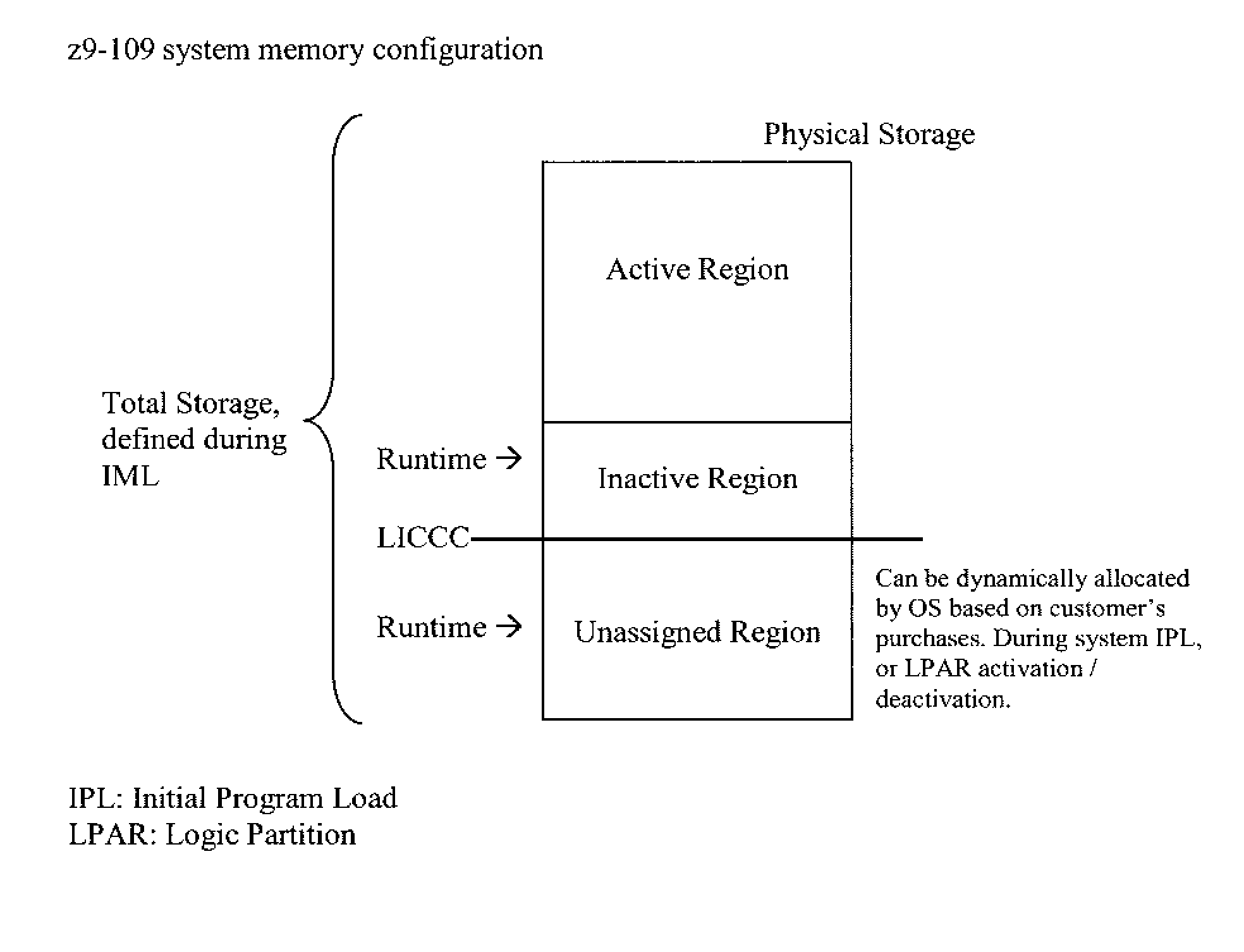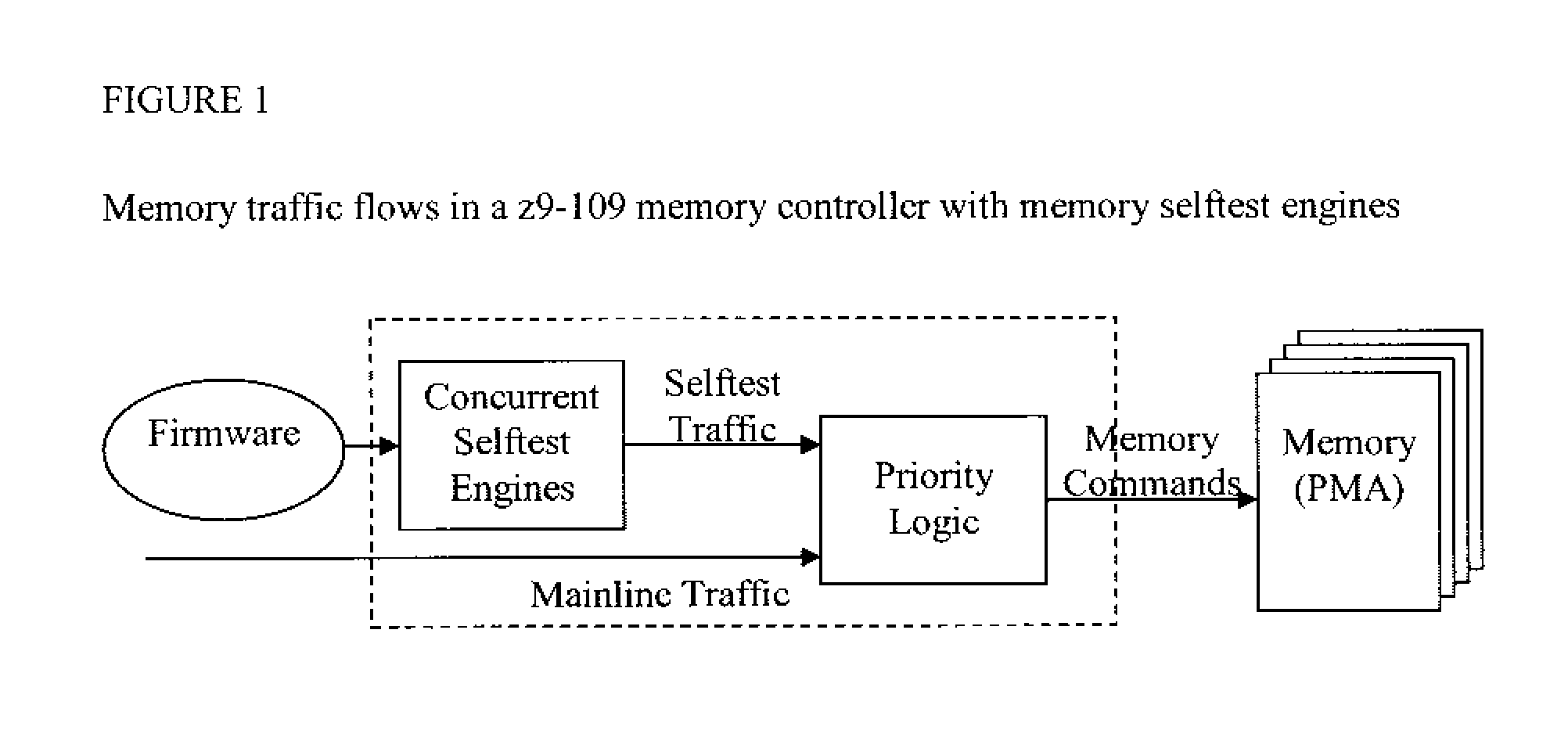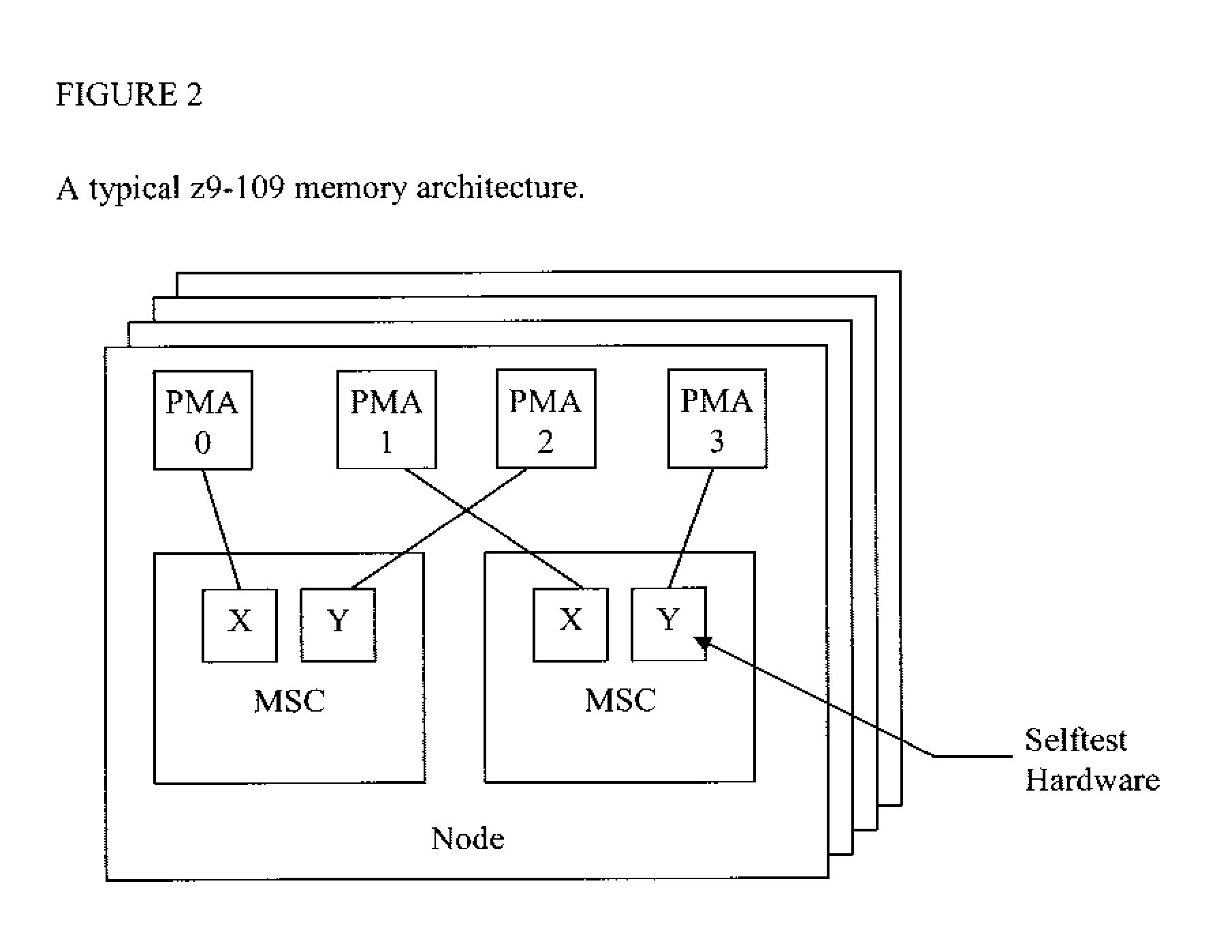Concurrent Hardware Selftest for Central Storage
- Summary
- Abstract
- Description
- Claims
- Application Information
AI Technical Summary
Benefits of technology
Problems solved by technology
Method used
Image
Examples
Embodiment Construction
[0021]We implement our invention with concurrent selftest hardware provided with the system which contains of two major pieces of hardware: selftest engine and priority logic. When concurrent selftest is needed, the hardware selftest engine is first setup by firmware. Generally, the starting and ending addresses, address mode, and data mode are initialized. After the setup under the firmware the selftest engine will start sending fetch and store commands to the priority logic in the background. The priority logic will take the commands from the selftest engine and regular mainline traffic, prioritize them, and send them sequentially over to the Processor Memory Arrays (PMA) section of the memory sub-system.
[0022]Turning now to the drawings in greater detail, it will be seen that in FIG. 1 there is a system block diagram that shows how the memory traffic is handled.
[0023]In the z9-109 implementation, the MSC (Main Storage Controller) chip has an X port and a Y side each independently...
PUM
 Login to View More
Login to View More Abstract
Description
Claims
Application Information
 Login to View More
Login to View More - R&D
- Intellectual Property
- Life Sciences
- Materials
- Tech Scout
- Unparalleled Data Quality
- Higher Quality Content
- 60% Fewer Hallucinations
Browse by: Latest US Patents, China's latest patents, Technical Efficacy Thesaurus, Application Domain, Technology Topic, Popular Technical Reports.
© 2025 PatSnap. All rights reserved.Legal|Privacy policy|Modern Slavery Act Transparency Statement|Sitemap|About US| Contact US: help@patsnap.com



